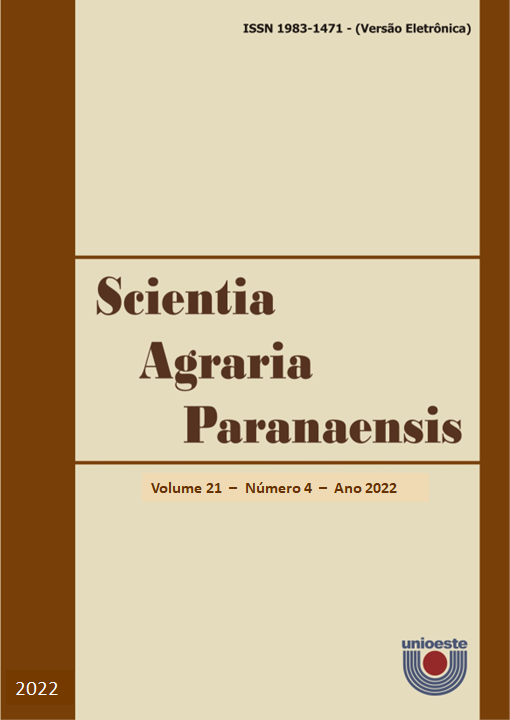ESTABLISHMENT AND GROWTH OF LIPPIA GRACILIS SCHAUER CULTIVATED UNDER DIFFERENT IN VITRO CONDITIONS
DOI:
https://doi.org/10.18188/sap.v21i4.30208Resumen
The objective of this study was to evaluate the explant type, its position and the culture medium used for the establishment and in vitro culture of Lippia gracilis. For the establishment experiment, the treatments were: two types of explants (apical and nodal) taken from two cultivation environments (field and greenhouse), and inoculated in two types of culture medium (MS and MS/2). Half of the salt concentration and the use of explants from a greenhouse reduced the rates of contamination, oxidation, and necrosis in the in vitro establishment of Lippia gracilis. In order to verify the influence of the explant position, the treatments consisted of explants horizontally or vertically inoculated. For the evaluation of sucrose in the culture medium, the concentrations of 7.5; 15; 30 and 60 g L-1 were tested, while for salt concentration, the treatments consisted of 4 different salt concentrations: ¼ MS; ½ MS; MS and 2MS. The sucrose concentration of 30 g L-1 and ½ MS culture medium showed the best growth results for the species. Although the production of dry matter was reduced in this concentration of salts, the plantlets were more vigorous to proceed to acclimatization. Therefore, the inoculation of explants in a horizontal position in ½ MS culture medium, supplemented with 30 g L-1 of sucrose is recommended for in vitro cultivation of L. gracilis.
Keywords: Carbohydrates, culture medium, micropropagation, salts, tissue culture.
Descargas
Publicado
Cómo citar
Número
Sección
Licencia
Aviso de Direito Autoral Creative Commons
Política para Periódicos de Acesso Livre
Autores que publicam nesta revista concordam com os seguintes termos:
1. Autores mantém os direitos autorais e concedem à revista o direito de primeira publicação, com o trabalho simultaneamente licenciado sob a Licença Creative Commons Attribution que permite o compartilhamento do trabalho com reconhecimento da autoria e publicação inicial nesta revista.2. Autores têm autorização para assumir contratos adicionais separadamente, para distribuição não-exclusiva da versão do trabalho publicada nesta revista (ex.: publicar em repositório institucional ou como capítulo de livro), com reconhecimento de autoria e publicação inicial nesta revista.
3. Autores têm permissão e são estimulados a publicar e distribuir seu trabalho online (ex.: em repositórios institucionais ou na sua página pessoal) a qualquer ponto antes ou durante o processo editorial, já que isso pode gerar alterações produtivas, bem como aumentar o impacto e a citação do trabalho publicado (Veja O Efeito do Acesso Livre).
Licença Creative Commons
Esta obra está licenciada com uma Licença Creative Commons Atribuição-NãoComercial-CompartilhaIgual 4.0 Internacional, o que permite compartilhar, copiar, distribuir, exibir, reproduzir, a totalidade ou partes desde que não tenha objetivo comercial e sejam citados os autores e a fonte.


